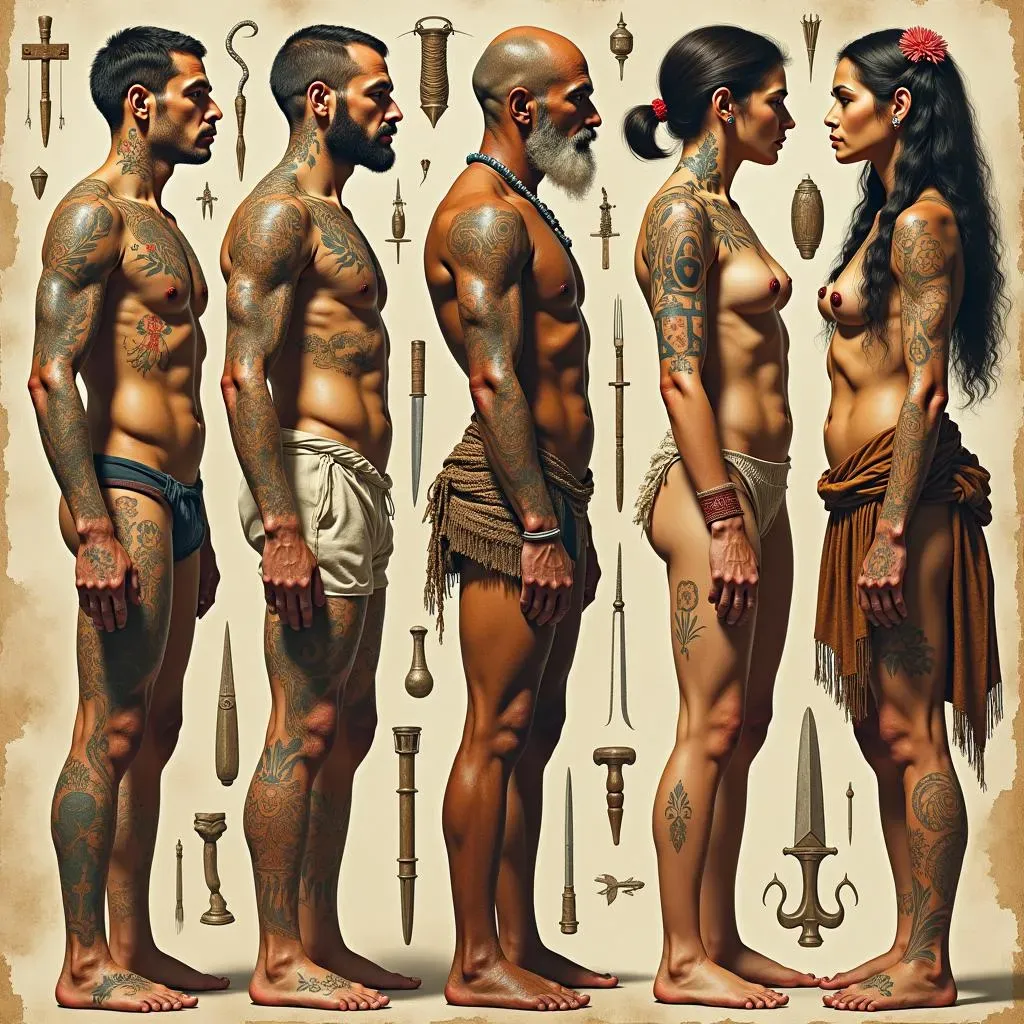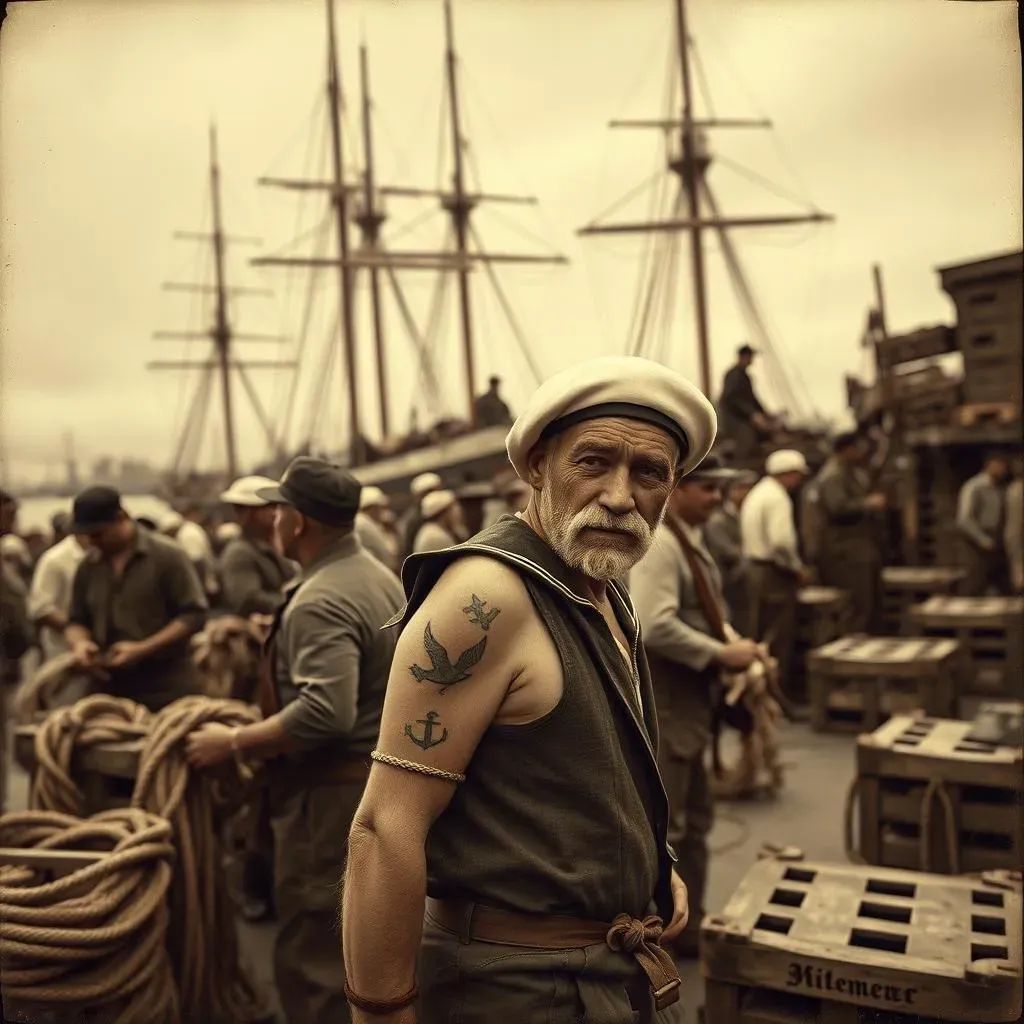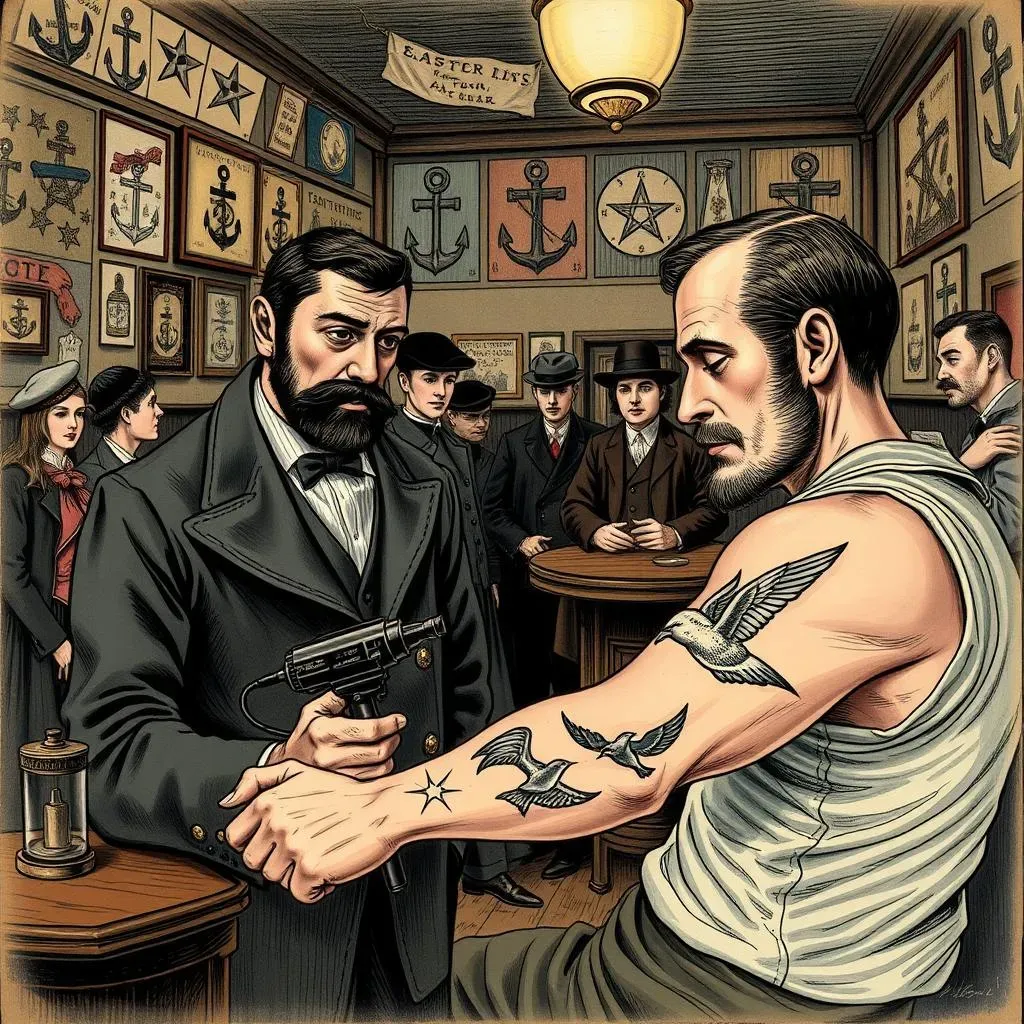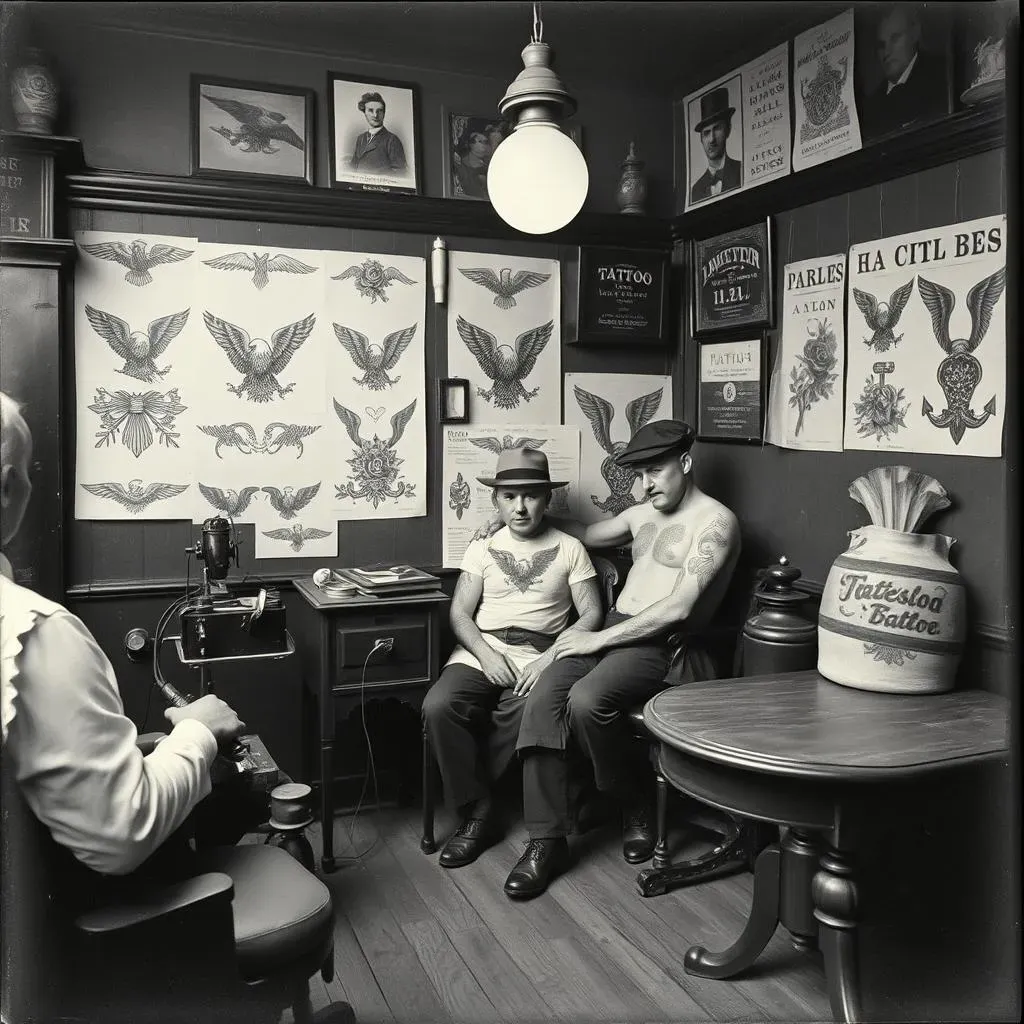Table of Contents
Did tattoos exist in 1899? Absolutely! Peel back the layers of history and you'll find that body art wasn't just a modern phenomenon. While it might not have been the mainstream sensation it is today, the world of tattoos in 1899 was surprisingly vibrant, albeit shrouded in different perceptions than we hold now. This article isn't just a simple "yes" or "no" answer; it's a journey back in time to explore the who, what, where, and why of tattoos at the turn of the century. We'll dive into the historical context that shaped tattooing, examine the prevalence and practices of the era, and spotlight the artists who were pushing the boundaries of this emerging art form. Prepare to uncover a fascinating chapter in tattoo history, revealing the ink-credible truth about tattoos in 1899 and how they paved the way for the modern tattoo culture we know and love. Get ready to explore a time when getting inked meant something entirely different!
Tattoo History Before 1899: Laying the Groundwork
Tattoo History Before 1899: Laying the Groundwork
Before diving into the specifics of 1899, let's set the stage. Tattooing boasts a history that stretches back millennia, with evidence popping up all over the globe. Think ancient mummies sporting ink, like Ötzi the Iceman, whose 5,000-year-old tattoos tell a silent story of ancient practices. From the tribal markings of indigenous cultures to the symbolic art of ancient civilizations, tattoos have served as identifiers, status symbols, spiritual emblems, and personal narratives. This widespread presence underscores that tattooing isn't some fleeting trend but a deeply ingrained aspect of human expression. By the time we approach the late 19th century, tattooing had already undergone countless transformations, influenced by cultural exchange, technological advancements (however primitive), and evolving social attitudes. So, before we pinpoint 1899, it's crucial to appreciate the rich, diverse tapestry of tattoo history that came before.
Tattoos in 1899: Perception, Practice, and Prevalence
Tattoos in 1899: Perception, Practice, and Prevalence
so 1899 rolls around. What's the tattoo scene looking like? Well, it's a mixed bag. Tattoos definitely existed, but their perception was worlds away from today's acceptance. Think sailors, soldiers, and those on the fringes of society – these were your stereotypical tattoo wearers. For many, tattoos were associated with a rebellious spirit, a life at sea, or even criminal activity. It wasn't exactly the kind of body art you'd flaunt at a high-society tea party. The practice itself was also quite different. Forget the fancy electric tattoo guns we have now; back then, it was mostly manual or rudimentary electric machines. Ink options were limited, and sterilization? Let's just say it wasn't always a top priority. Despite these limitations, tattoos were more prevalent than you might think, especially within certain subcultures. They served as badges of honor, declarations of identity, and permanent reminders of life's adventures – or misadventures, depending on who you ask.
The prevalence of tattoos also varied geographically. Coastal cities and port towns, naturally, saw a higher concentration due to the seafaring population. In Europe, royalty like King Frederik IX of Denmark sported tattoos, a testament to their popularity among sailors and a surprising departure from societal norms. However, it's important to note that these instances were exceptions rather than the rule. The average person likely held a skeptical or even negative view of tattoos, associating them with a lifestyle far removed from their own. So, while tattoos in 1899 existed, they were far from being a mainstream form of self-expression. They were a mark of distinction, a symbol laden with meaning, and often, a sign of rebellion against the established order.
Aspect | Description |
|---|---|
Typical Wearers | Sailors, Soldiers, Marginalized Groups |
Perception | Often Negative, Associated with Rebellion |
Prevalence | Higher in Coastal Cities, Varies Geographically |
Techniques | Manual or Rudimentary Electric Machines |
Pioneering Tattoo Artists and Styles Emerging Around 1899
Pioneering Tattoo Artists and Styles Emerging Around 1899
The Electric Revolution: Samuel O'Reilly and Beyond
so 1899 wasn't just about rough-and-tumble tattoo parlors. It was also a time of innovation! The biggest game-changer? The electric tattoo machine. Samuel O'Reilly, an Irish-American tattoo artist, patented his version of the electric tattoo machine in 1891, and by 1899, it was starting to gain traction. Based on Thomas Edison's electric pen, O'Reilly's invention sped up the tattooing process and allowed for more intricate designs. While manual methods were still prevalent, the electric machine marked a turning point, paving the way for modern tattooing techniques. O'Reilly wasn't the only one experimenting, of course. Other inventors and artists were tinkering with designs and techniques, contributing to a slow but steady evolution of the craft. It was an exciting time, with the possibilities of tattoo art expanding thanks to these pioneering efforts.
Think about it: before the electric machine, every line was painstakingly hand-poked. O'Reilly's invention wasn't just about speed; it was about opening up new artistic avenues. And while the machines of 1899 weren't exactly the sleek, precise instruments we have today, they represented a massive leap forward. It's like comparing a horse-drawn carriage to a Model T Ford – both get you from point A to point B, but one does it with a whole lot more efficiency and potential. This innovation fueled the growth of the tattoo industry and inspired a new generation of artists to push the boundaries of what was possible with ink.
Pioneer | Contribution |
|---|---|
Samuel O'Reilly | Patented the electric tattoo machine |
Other Inventors | Experimented with machine designs and techniques |
The Dawn of Traditional American Tattooing
Around 1899, you also see the very beginnings of what would become known as traditional American tattooing. This style, characterized by bold outlines, simple designs, and iconic imagery like eagles, roses, and nautical stars, was starting to take shape in port cities and military towns. Artists like Lew Alberts and Charlie Wagner, though not exclusively working in this style in 1899, were laying the groundwork for its future popularity. These early traditional tattoos were often inspired by the lives and experiences of sailors and soldiers, reflecting their travels, beliefs, and personal stories. They were bold, straightforward, and designed to last, both in terms of physical durability and symbolic meaning.
Imagine a sailor getting a tattoo of a swallow before a long voyage. It wasn't just a pretty picture; it was a symbol of hope, a promise of safe return. Or a soldier getting an anchor to represent stability and strength. These tattoos were more than just decoration; they were visual representations of identity, loyalty, and personal narratives. While the artistry might seem simple by today's standards, the impact and significance of these early traditional tattoos were profound. They represented a unique form of self-expression and a powerful way to connect with a community, all while defying the societal norms of the time. The bold lines and classic imagery of traditional American tattooing, born from this era, continue to resonate with tattoo enthusiasts today.
The Legacy of 1899: How Tattoos Evolved Into Modern Body Art
The Legacy of 1899: How Tattoos Evolved Into Modern Body Art
From Subculture to Self-Expression: The Shifting Tides
The year 1899 might seem like a blip in the grand scheme of tattoo history, but it was a crucial turning point. It was a time when tattoos were transitioning from a mark of the marginalized to a form of self-expression, albeit still largely confined to certain subcultures. The invention of the electric tattoo machine was a catalyst, making the process faster and more accessible. This, in turn, allowed for more intricate designs and a wider range of artistic possibilities. While tattoos still carried a stigma for many, their presence in popular culture was slowly growing. Think of it as the early rumblings of a revolution – a slow burn that would eventually lead to the explosion of tattoo art we see today.
It's fascinating to consider how those early tattoos, often simple and symbolic, paved the way for the elaborate and diverse styles we have now. They represented a form of rebellion against societal norms, a way for individuals to express their identity and connect with like-minded people. Even the negative associations – the connection to sailors, soldiers, and outlaws – contributed to the mystique and allure of tattoos. These early adopters were, in a way, the pioneers of modern tattoo culture, challenging perceptions and paving the way for future generations to embrace body art as a form of self-expression. So, when we look at the intricate sleeves and vibrant back pieces of today, it's important to remember the humble beginnings of 1899, where the seeds of a cultural phenomenon were just starting to sprout.
The Ripple Effect: Technological and Artistic Advancements
The impact of 1899 extends beyond just shifting perceptions; it also influenced the technological and artistic trajectory of tattooing. The electric tattoo machine, still in its early stages, was constantly being refined and improved. This led to more precise and efficient tattooing techniques, allowing artists to create more detailed and complex designs. Simultaneously, the rise of traditional American tattooing, with its bold lines and iconic imagery, established a distinct style that would become a cornerstone of tattoo culture. These advancements, both technological and artistic, created a feedback loop, pushing the boundaries of what was possible with ink.
Consider how the limited color palettes of the time influenced the development of bold, graphic designs. Or how the need for durable, long-lasting tattoos led to the refinement of techniques that ensured the ink would hold up over time. Every limitation became an opportunity for innovation, shaping the evolution of tattoo art in unexpected ways. The legacy of 1899 is not just about what tattoos were, but also about what they would become. It was a time of experimentation, innovation, and the slow but steady erosion of societal stigmas. It was a crucial chapter in the ongoing story of tattoos, a story that continues to evolve and captivate us today.
Aspect | Impact |
|---|---|
Electric Tattoo Machine | Faster, more intricate designs |
Traditional American Tattooing | Established a distinct style |
Limited Resources | Fueled innovation and creativity |
Conclusion: The Enduring Mark of Tattoos, From 1899 to Today
So, did tattoos exist in 1899? The answer is a resounding yes, but with a complex and fascinating backstory. They existed in a world far removed from today's tattoo parlors and social media showcases. Back then, tattoos were badges of identity, symbols of rebellion, and nascent forms of artistic expression. The pioneering artists of that era, working with limited technology and facing societal stigmas, laid the foundation for the diverse and accepted tattoo culture we celebrate today. From the electric tattoo machine's invention to the bold designs favored by sailors and soldiers, 1899 was a pivotal year in the evolution of tattooing. It reminds us that body art has always been a powerful form of communication, self-expression, and storytelling, continually evolving and adapting to reflect the times.